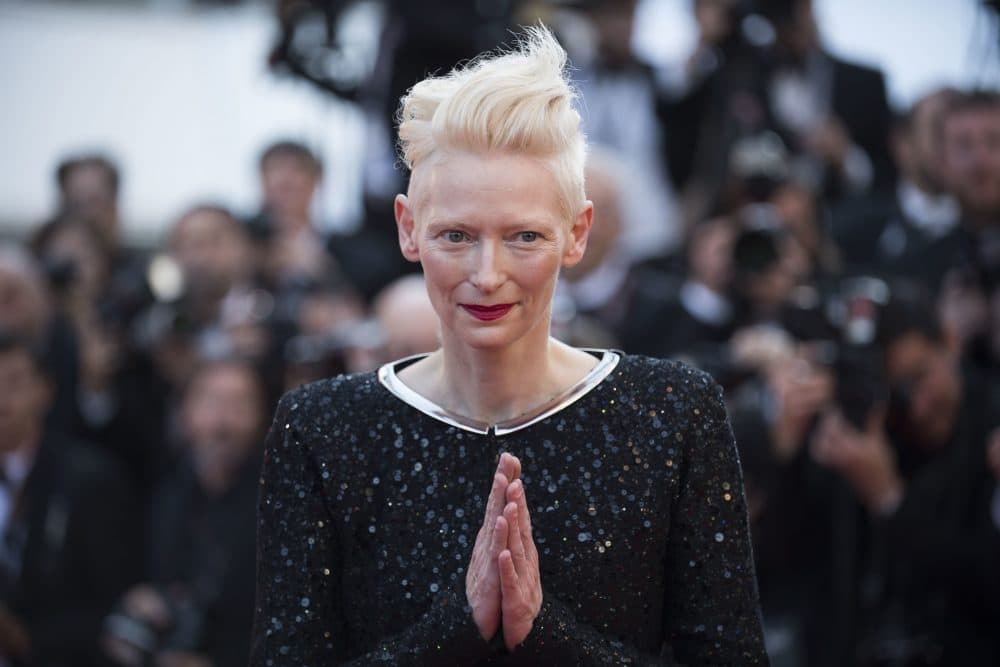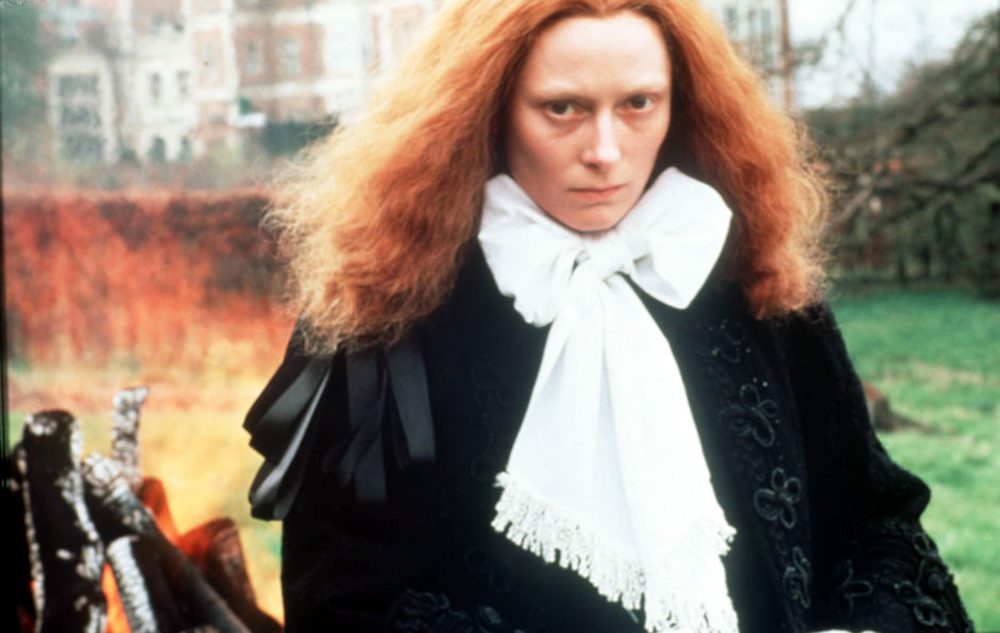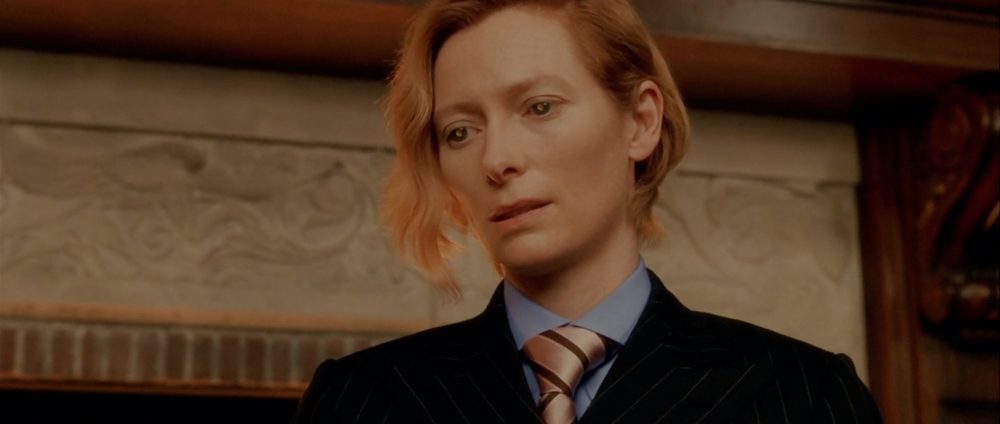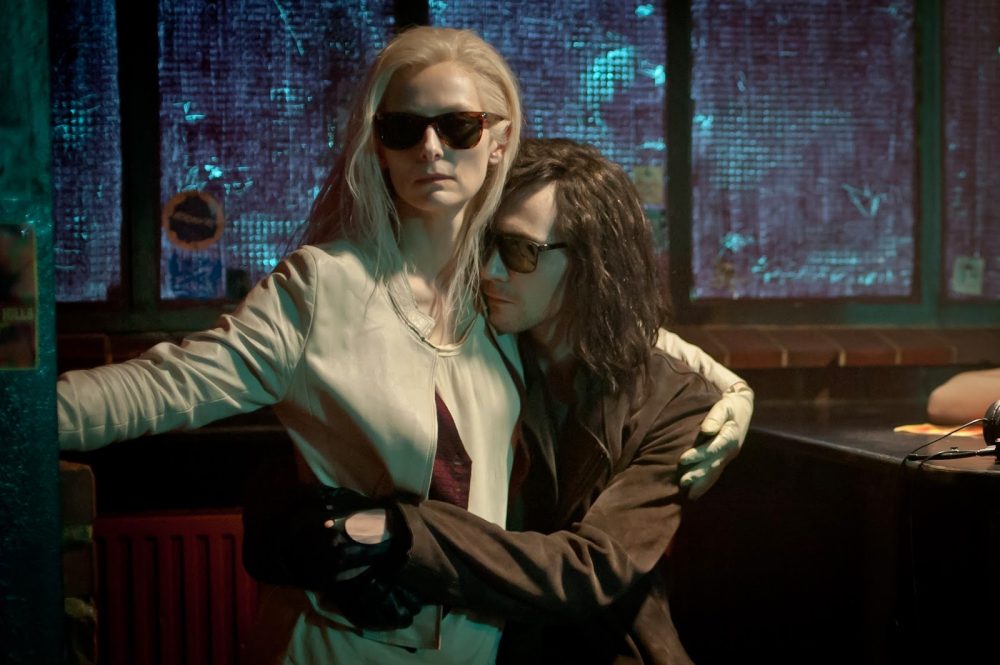Advertisement
Why The Brattle Has Dubbed Tilda Swinton The 'World's Greatest Actress'

Five years ago the Brattle Theatre ran a series controversially named “Nicolas Cage: Greatest American Actor,” celebrating the gloriously gonzo performances of America’s most unfairly ridiculed master thespian. (Yes, I was there almost every night.) So far there hasn’t been nearly as much dissent over the theater's choice of a follow-up, “Tilda Swinton: World’s Greatest Actress,” which begins Thursday, Sept. 14 and runs through Saturday, Sept. 23.
The angular, ethereal Swinton is these days more outwardly respectable than the increasingly disreputable Cage, but the remarkable range and daring shown in the performances selected by the Brattle show off an actress no less audacious and wonderfully strange. She also seems like one of the coolest people on the planet, fostering long-term collaborations with some of our most exciting filmmakers while pivoting between Hollywood and the arthouse with ease.
“Tilda Swinton is simply one of the most mercurial and indelible screen performers of our age,” says the Brattle’s creative director Ned Hinkle, via email from the Toronto Film Festival. “She fits neither the definition of movie star nor the definition of character actor. I think she’s a very unique performer and also, in a real way, a cinema artist."
Hinkle credits the Brattle's executive director, Ivy Moylan, for coming up with the series of almost 20 films as one aspect of the theater's year-long dedication to showing films made by, for or about women.

The retrospective kicks off Thursday night (Sept. 14) with Sally Potter’s “Orlando,” the 1992 gender-bending arthouse smash that served as most filmgoers’ introduction to Swinton’s androgynous charms. She stars as a 16th century nobleman commanded by Queen Elizabeth I (cheekily played by author Quentin Crisp) to remain forever young — and somehow he/she does, swapping sexes over the centuries in an elaborate and sometimes puzzling spectacle picture that works mostly as a showcase for Swinton’s singular screen presence.
“If Tilda Swinton had attempted to react to every turn and event in Orlando's life the movie might have grown tiresome,” wrote Roger Ebert upon the film’s release. “But her detachment, and what can only be called her sweetness, provides the proper tone for the material.”
In conventional Hollywood movies Swinton can sometimes seem like her own special effect, spicing up franchise tentpoles like “The Chronicles Of Narnia: The Lion, The Witch And The Wardrobe” and winning an Oscar for the clammy, otherworldly intensity she brought to the meat-and-potatoes “Michael Clayton.” Most folks probably didn’t recognize her as the haughty, glamazon magazine editor in Judd Apatow and Amy Schumer’s “Trainwreck,” and the series even finds time for the little-seen “Constantine,” a surprisingly scary, R-rated comic book adaptation starring Keanu Reeves as a surly paranormal detective. Swinton co-stars as the angel Gabriel, because really, who else would you cast?
Advertisement

Her creative partnership with the late Derek Jarman is represented with both “Caravaggio” (Swinton’s film debut) and their phantasmagoric, rarely screened “The Last of England.” Hinkle says that “if you want to see the kind of unique performer that she is, I’d suggest the art-film freakout of ‘The Last of England’ and then follow it up with the more conventional late show of The Beach.”
Another extraordinary example of her range can be found in the double feature on Sunday, Sept. 17, focusing on Swinton’s recent collaborations with director Luca Guadagnino. 2009’s “I Am Love” stars the actress as a mousy, middle-aged Russian émigré loosening up and falling into a torrid affair with one of her 20-something son’s friends. Her lusty liberation is almost the opposite emotional journey of last year's woefully overlooked “A Bigger Splash,” in which Swinton plays a Ziggy Stardust-styled arena rocker trying to trade a lifetime of debauchery for newfound stability, despite the intrusive advances of her ex (played with great gusto by Ralph Fiennes). For the first film Swinton learned to speak Italian with a Russian accent, and in the latter she rarely speaks at all as the character is recovering from throat surgery. Let it never be said that this actress doesn’t love a challenge.
It all closes out with Hinkle’s favorite film in the series, and mine as well. Swinton is immortal again in Jim Jarmusch’s “Only Lovers Left Alive,” co-starring with Tom Hiddleston as a supercool couple of aging hipster vampires who have been hanging around the art world fringes since the Byronic era.

A love letter to the filmmaker’s longtime partner Sara Driver (credited as “instigation and inspiration”), the film — despite the horror movie trappings — is really about having someone to listen to records with and dance on a lazy evening, and how even the crankiest of couples complete each other when they’re in it together for the long haul. It also proves, as does this series, that there are worse ways to spend eternity than with Tilda Swinton.
